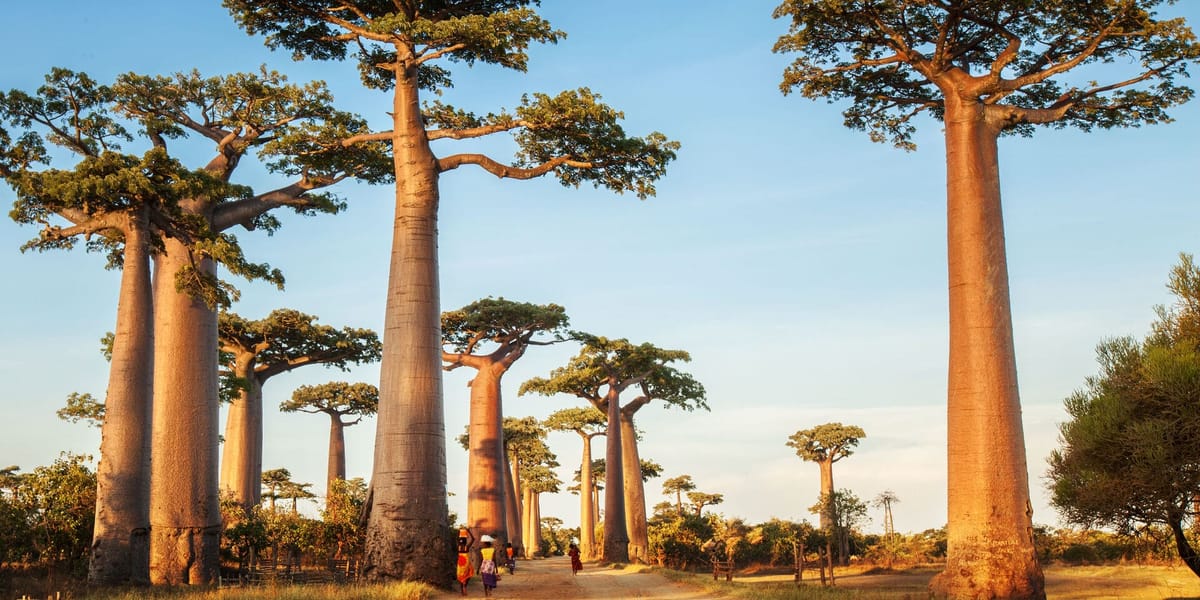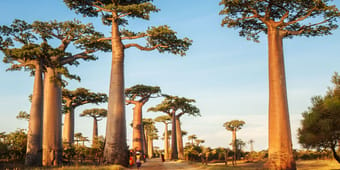
Flights to Antananarivo with Air France from CAD 1,981*
expand_more
1 Passenger, Economy
expand_moretoday
today
*Modifying this information may result in a different fare
Find your flight to Antananarivo
flight_takeoff
flight_land

Montreal (YUL)to
Antananarivo (TNR)03/02/2026 - 03/09/2026
From
CAD 1,981
Seen: 17 hrs ago
Round-trip
Economy

Montreal (YUL)to
Antananarivo (TNR)03/02/2026 - 03/23/2026
From
CAD 1,981
Seen: 17 hrs ago
Round-trip
Economy

Montreal (YUL)to
Antananarivo (TNR)03/09/2026 - 03/23/2026
From
CAD 1,981
Seen: 17 hrs ago
Round-trip
Economy

Montreal (YUL)to
Antananarivo (TNR)03/09/2026 - 03/30/2026
From
CAD 1,981
Seen: 17 hrs ago
Round-trip
Economy

Montreal (YUL)to
Antananarivo (TNR)03/16/2026 - 03/23/2026
From
CAD 1,981
Seen: 17 hrs ago
Round-trip
Economy

Québec (YQB)to
Antananarivo (TNR)01/26/2026 - 02/16/2026
From
CAD 2,113
Seen: 1 day ago
Round-trip
Economy

Québec (YQB)to
Antananarivo (TNR)01/26/2026 - 02/02/2026
From
CAD 2,113
Seen: 1 day ago
Round-trip
Economy

Québec (YQB)to
Antananarivo (TNR)03/02/2026 - 03/23/2026
From
CAD 2,113
Seen: 18 hrs ago
Round-trip
Economy

Québec (YQB)to
Antananarivo (TNR)03/09/2026 - 03/23/2026
From
CAD 2,113
Seen: 18 hrs ago
Round-trip
Economy

Québec (YQB)to
Antananarivo (TNR)03/16/2026 - 03/23/2026
From
CAD 2,113
Seen: 18 hrs ago
Round-trip
Economy

Toronto (YYZ)to
Antananarivo (TNR)02/23/2026 - 03/16/2026
From
CAD 2,018
Seen: 17 hrs ago
Round-trip
Economy

Toronto (YYZ)to
Antananarivo (TNR)02/02/2026 - 02/16/2026
From
CAD 2,018
Seen: 17 hrs ago
Round-trip
Economy

Toronto (YYZ)to
Antananarivo (TNR)02/16/2026 - 03/16/2026
From
CAD 2,018
Seen: 17 hrs ago
Round-trip
Economy

Toronto (YYZ)to
Antananarivo (TNR)02/09/2026 - 03/09/2026
From
CAD 2,018
Seen: 17 hrs ago
Round-trip
Economy

Toronto (YYZ)to
Antananarivo (TNR)02/02/2026 - 02/09/2026
From
CAD 2,018
Seen: 17 hrs ago
Round-trip
Economy
*Fares displayed have been collected within the last 48hrs and may no longer be available at time of booking. Additional fees and charges for optional products and services may apply.
Check our flights to Antananarivo for the upcoming months
flight_takeoff
flight_land
From | To | Fare Type | Dates | Price |
|---|---|---|---|---|
| Montreal (YUL) | Antananarivo (TNR) | Round-trip / Economy | 03/02/2026 - 03/09/2026 | From CAD 1,981 Seen: 17 hrs ago |
| Montreal (YUL) | Antananarivo (TNR) | Round-trip / Economy | 03/02/2026 - 03/23/2026 | From CAD 1,981 Seen: 17 hrs ago |
| Montreal (YUL) | Antananarivo (TNR) | Round-trip / Economy | 03/09/2026 - 03/23/2026 | From CAD 1,981 Seen: 17 hrs ago |
| Montreal (YUL) | Antananarivo (TNR) | Round-trip / Economy | 03/09/2026 - 03/30/2026 | From CAD 1,981 Seen: 17 hrs ago |
| Montreal (YUL) | Antananarivo (TNR) | Round-trip / Economy | 03/16/2026 - 03/23/2026 | From CAD 1,981 Seen: 17 hrs ago |
| Québec (YQB) | Antananarivo (TNR) | Round-trip / Economy | 01/26/2026 - 02/16/2026 | From CAD 2,113 Seen: 1 day ago |
| Québec (YQB) | Antananarivo (TNR) | Round-trip / Economy | 01/26/2026 - 02/02/2026 | From CAD 2,113 Seen: 1 day ago |
| Québec (YQB) | Antananarivo (TNR) | Round-trip / Economy | 03/02/2026 - 03/23/2026 | From CAD 2,113 Seen: 18 hrs ago |
| Québec (YQB) | Antananarivo (TNR) | Round-trip / Economy | 03/09/2026 - 03/23/2026 | From CAD 2,113 Seen: 18 hrs ago |
| Québec (YQB) | Antananarivo (TNR) | Round-trip / Economy | 03/16/2026 - 03/23/2026 | From CAD 2,113 Seen: 18 hrs ago |
| Toronto (YYZ) | Antananarivo (TNR) | Round-trip / Economy | 02/23/2026 - 03/16/2026 | From CAD 2,018 Seen: 17 hrs ago |
| Toronto (YYZ) | Antananarivo (TNR) | Round-trip / Economy | 02/02/2026 - 02/16/2026 | From CAD 2,018 Seen: 17 hrs ago |
| Toronto (YYZ) | Antananarivo (TNR) | Round-trip / Economy | 02/16/2026 - 03/16/2026 | From CAD 2,018 Seen: 17 hrs ago |
| Toronto (YYZ) | Antananarivo (TNR) | Round-trip / Economy | 02/09/2026 - 03/09/2026 | From CAD 2,018 Seen: 17 hrs ago |
| Toronto (YYZ) | Antananarivo (TNR) | Round-trip / Economy | 02/02/2026 - 02/09/2026 | From CAD 2,018 Seen: 17 hrs ago |
*Fares displayed have been collected within the last 48hrs and may no longer be available at time of booking. Additional fees and charges for optional products and services may apply.

Travel to Antananarivo
Whether you're looking for a last-minute Antananarivo (TNR) flight or planning a flight at a later date, take advantage of our lowest prices for your travel dates on this site. With our flights list you can easily find for the coming months the cheapest prices to fly with Air France to Antananarivo (TNR). You can also directly pick your departure date on our booking engine at the top of the page, if your trip to Antananarivo (TNR) is already scheduled.
Flights to Antananarivo from Canada with Air France
The city of Antananarivo is both the capital of the island country of Madagascar and, with about 1.4 million inhabitants, its largest urban settlement by far. One of the highest capital cities in the world, at 1288 metres above sea level, it has a climate characterized by wet summers and very dry winters. The daily annual mean is 18.3°C. The city bears both the mark of French city planners and large-scale rural migration, not to mention architectural innovations introduced by both British and French such as sun-dried bricks and roof tiles. The local currency is the Malagasy Ariary. Flights to Antananarivo from Montréal involve a change in Paris, with the whole trip taking around 21 hours.
Antananarivo – a fascinating mix of architecture, from royal complexes to French-style railway stations
The city of Antananarivo was founded around 1610, long before Madagascar was colonized by the French. However, because the building of houses in stone and brick was forbidden by royal decree up until 1867, little remains of the pre-colonial city. Two large stone staircases connecting the marketplace to the middle town which were built in 1832 are an exception, as is the Rova of Antananarivo. A palace complex rather than just a single building, the Rova has been steadily added to since the early 17th century. Although a fire in 1995 destroyed much of the site, reconstruction efforts have paid off and the royal chapel, 9 royal tombs, wooden houses built in a style that was reserved for the aristocratic classes, and most importantly, the Manjakamiadana or Queen’s Palace can now be seen again. When fully completed, the palace is to house the many artefacts saved from the fire, some of which can currently be seen in the Andafiavaratra Palace, a former Prime Minister’s residence.
Notable French-designed or built buildings in Antananarivo include the university (early 1960s), the former residence of the Governor-General (now the Ambohitsorohitra Presidential Palace) and the Soarano train station. An excellent way of seeing the architecture of the city, past and present – and much more – is to visit the new Madagascan Museum of Photography (Musée de la Photographie de Madagascar).
A short distance outside of the capital lies another rova, the Royal Hill of Ambohimanga. This is one of only three UNESCO World Heritage sites in Madagascar. Built on a hill that is sacred to the Merina people, the walled complex contains 14 gateways and many royal residences, pavilions and tombs.
Lemur-spotting – one of the great delights of a trip to Antananarivo!
Madagascar is world-famous for its wildlife, especially the 100 or so members of the Lemur family, found here and nowhere else. It’s possible to see lemurs in a wild setting a short distance outside Antananarivo at the Lemurs Park. The species present in the park include ring-tailed, mongoose, common brown and eastern lesser bamboo lemurs.
A little further afield (75km east of the city) is Madagascar Exotic. This private reserve contains an abundance of reptiles and butterflies, including multiple species of chameleon and gecko. Several kinds of lemur may also be seen in nearby forest habitat and at the reserve itself, where they are regularly fed.
For additional information on health issues and hotel bookings just follow these links.
Helpful websites to make your trip to Antananarivo go without a hitch!
These websites will enable you to prepare your itinerary before you’ve even set food in Madagascar!
- madagascar-embassy.ca/en/tourisme-culture/tourism/discover-madagascar
- madagascar-tourisme.com/en/
- lemurspark.com/
- photo-madagascar.com/collection/ (although this site is not in English, it contains a large selection of interesting photographs)
